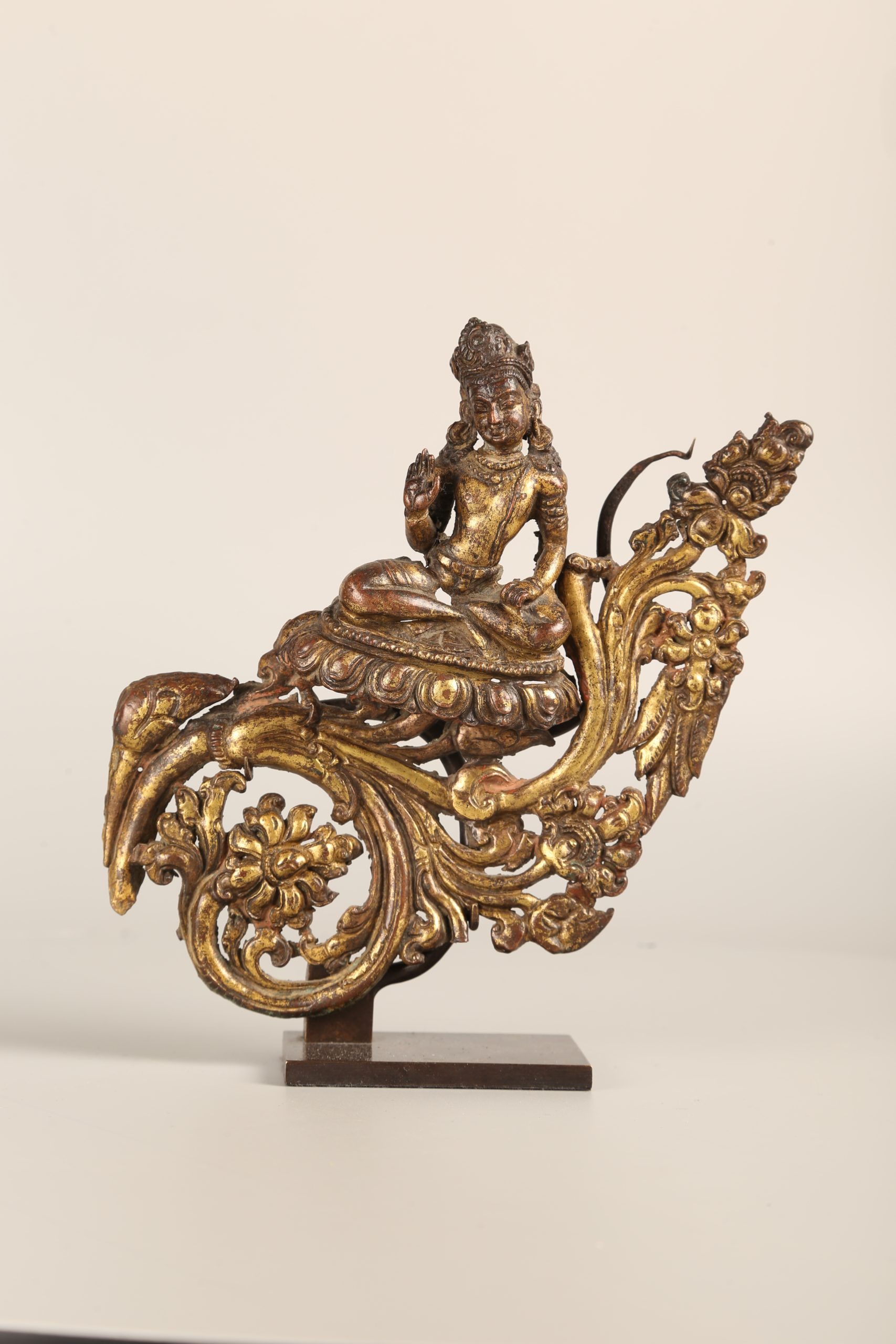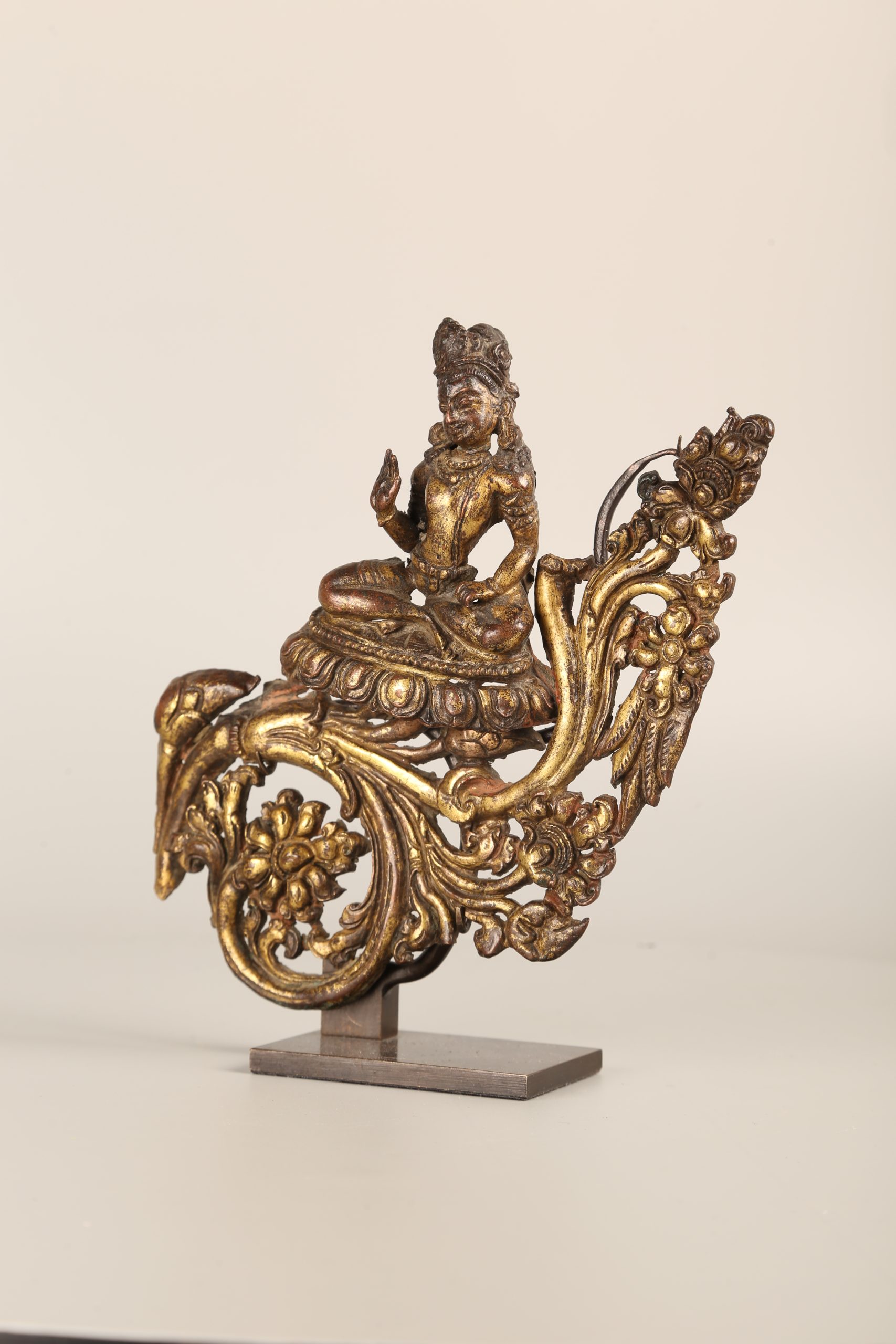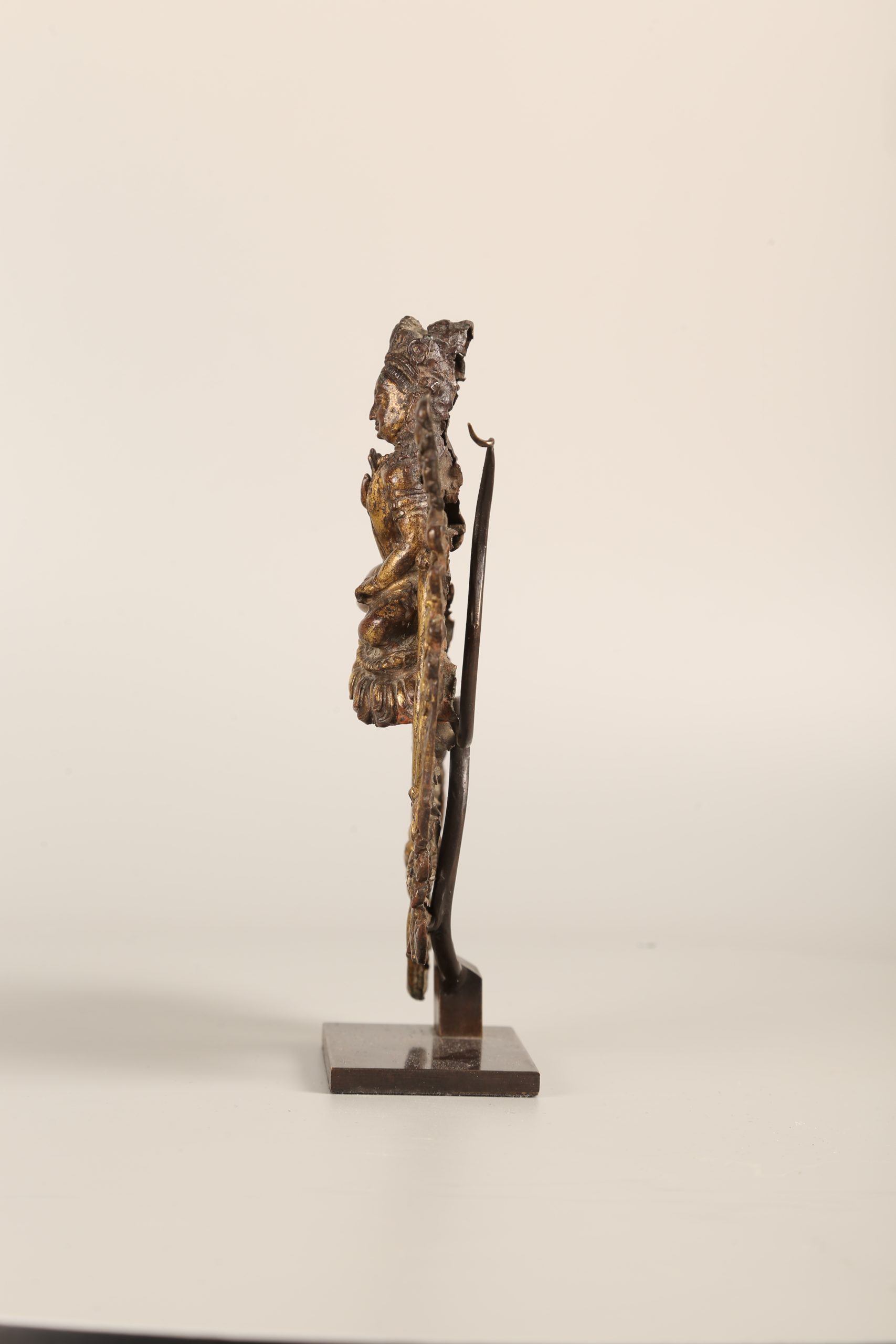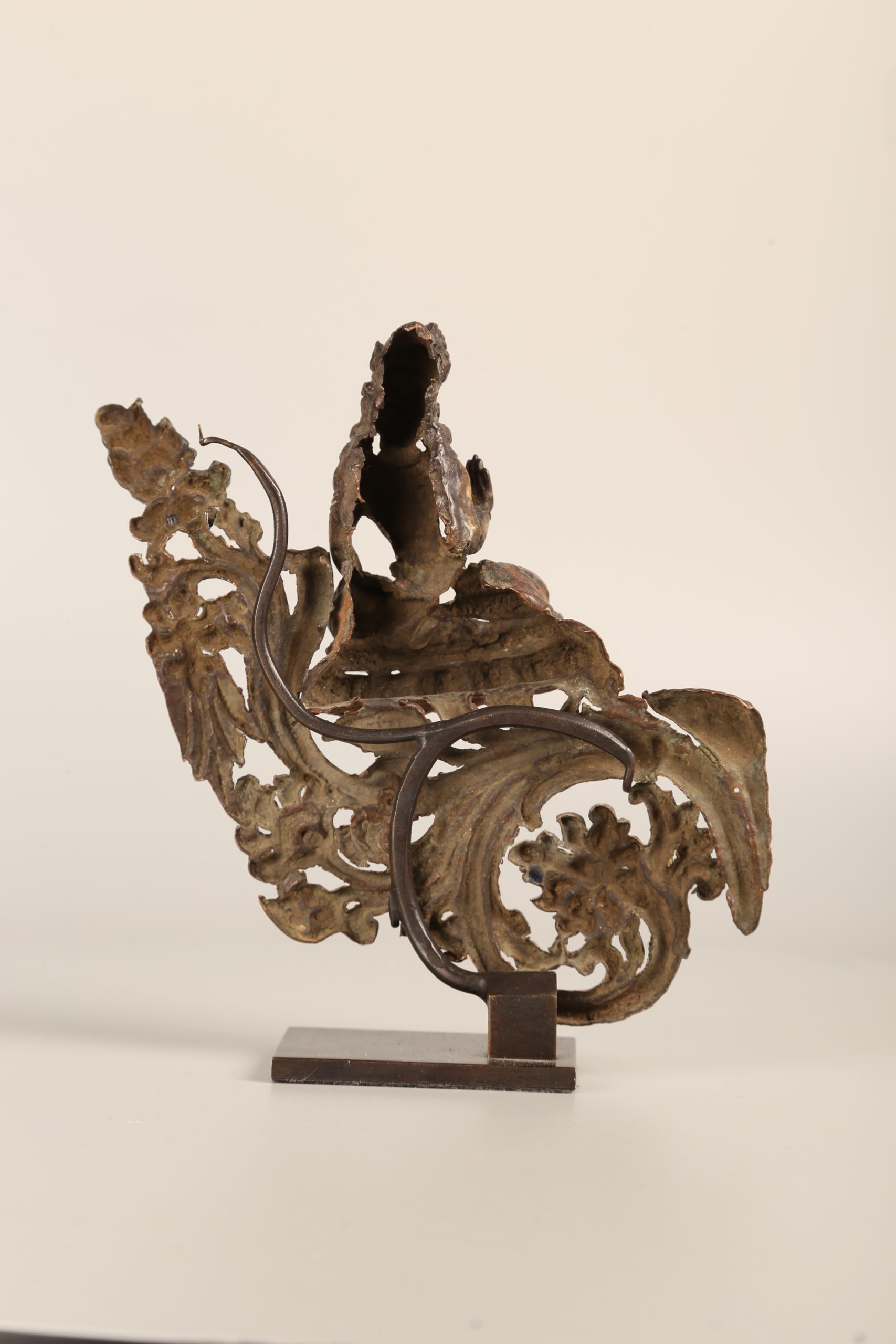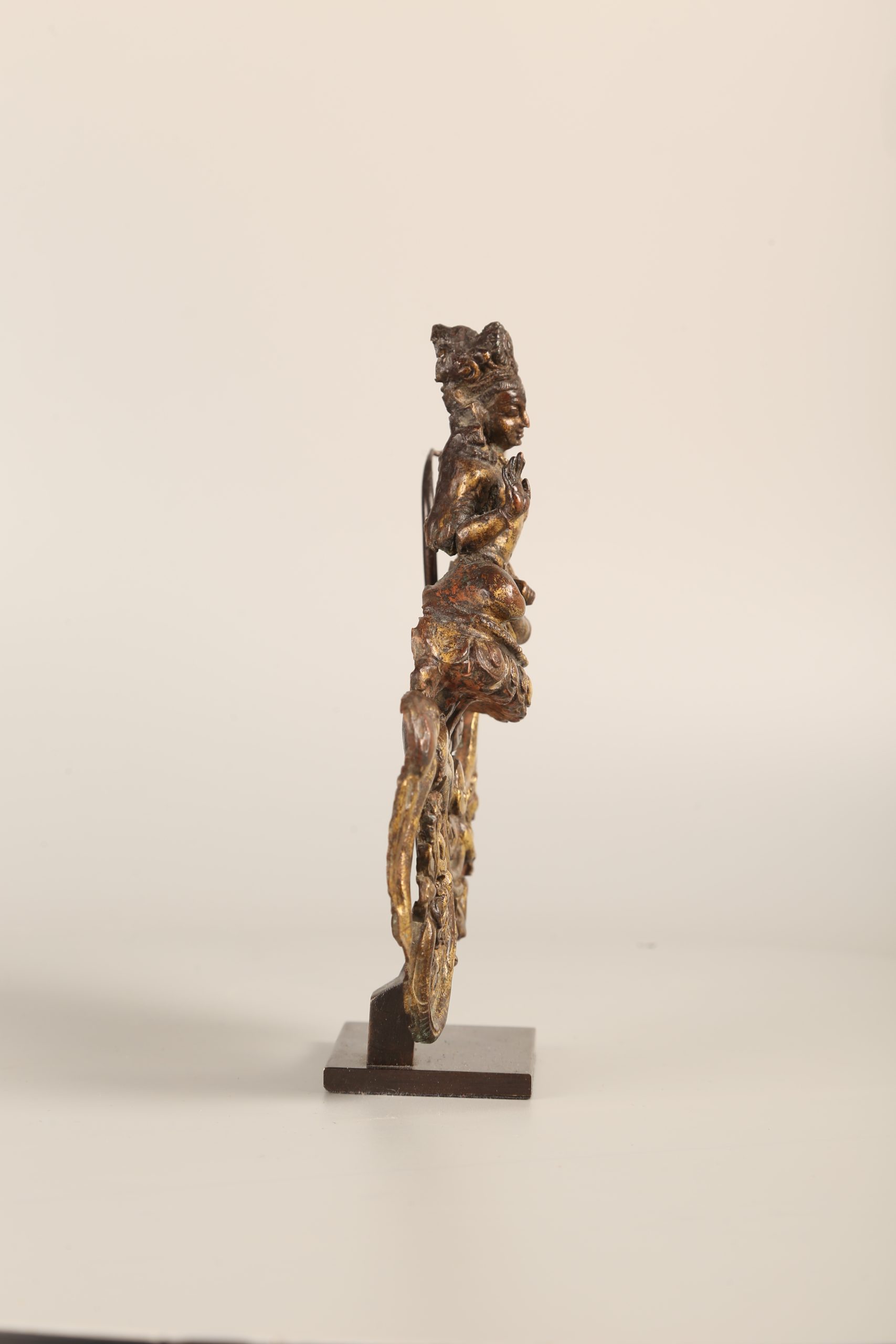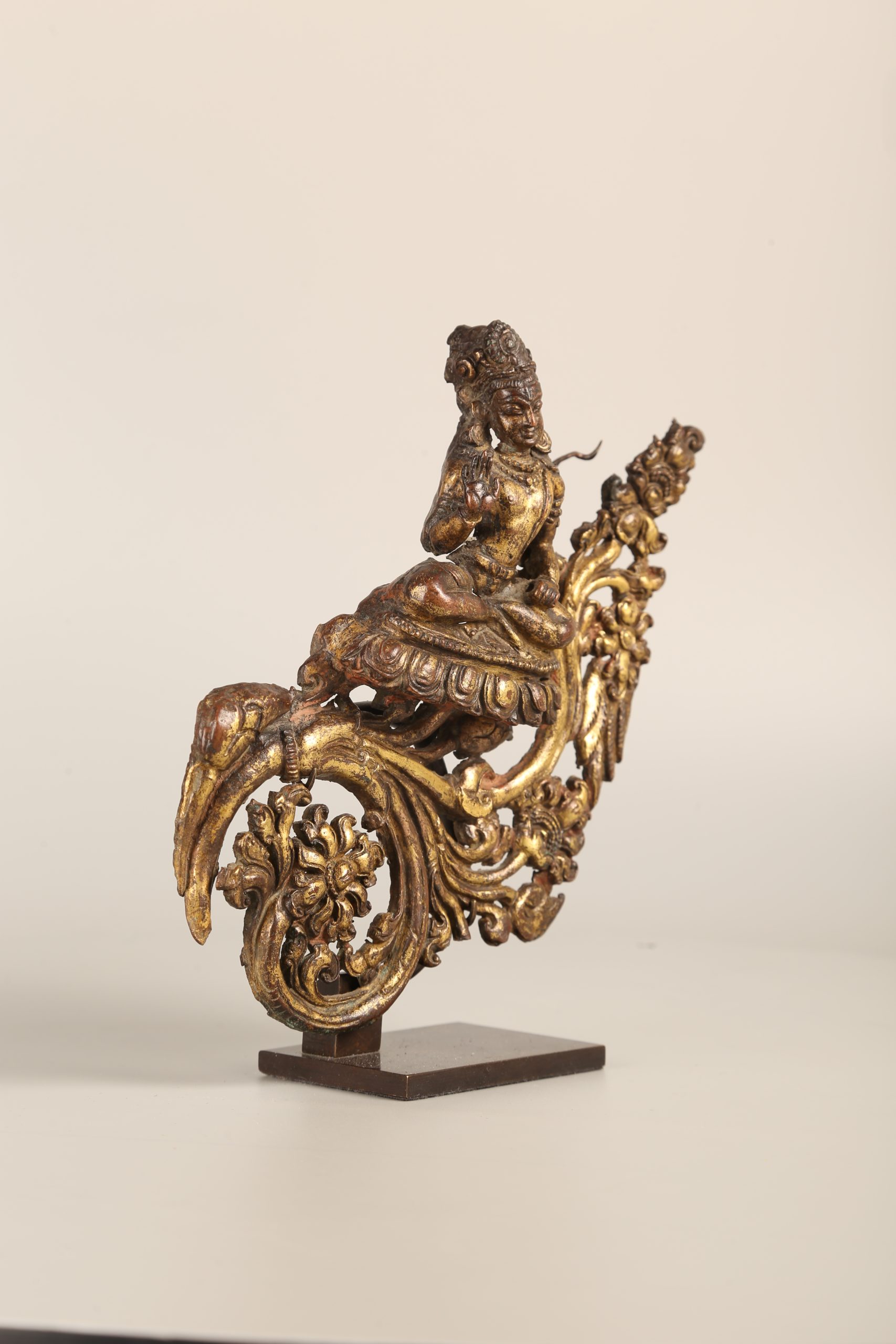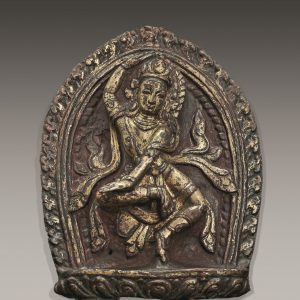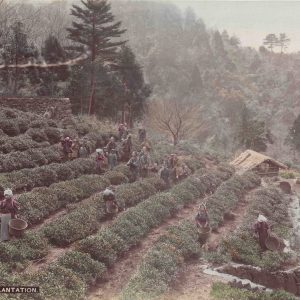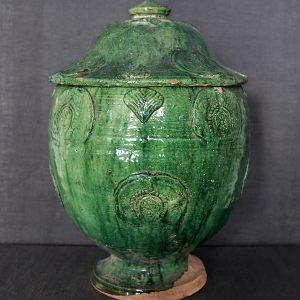- Sorry, this product cannot be purchased.
Bodhisattva
Description
Of a particularly elegant and aerial form, this superb ornamental element combines the figure of a bodhisattva richly adorned and with a graceful posture, with a generous stylized foliage displaying a set of floral motifs with extremely careful and varied details.
The figure of the bodhisattva
From the multiplication of his jewelry and his posture, there is no doubt that we are facing the representation of a bodhisattva. Seated in the lotus position (padmāsana) on a lotiform base, he sketches with his right hand the gesture of absence of fear (abhayamudrā) while his left hand closes on his attribute, perhaps the stem of a lotus or a vajra. Without this iconographic element, the precise identification of this bodhisattva cannot be advanced.
Bodhisattvas developed as a result of the emergence of Mahāyāna Buddhism and its desire to introduce laymen into religious life. These beings, of great purity, are ” promised to an Awakening “, a specific state of historical Buddha before their “Enlightenment”. However, they refuse to reach it, feeling compassion for all sentient creatures of the earth and only wishing to break free of the causal loop along with them.
Himalayan arts: preciousness and refinement
The richness of the ornaments and their sophistication echo the great refinement of the scrolls and floral motifs of the vegetal foliage. Petal, stem, leaf: each ornament is carefully crafted. This precious aspect, this finesse in the treatment of the details (the face and the hand of the bodhisattva are good examples), this overall elegance are all characteristic of Himalayan arts. One can also note a certain mannerism (very elegant here and in no way excessive) which is a common taste in Nepal, Tibet and China.
This beautiful object, with its superb openwork, is made of gilded copper using the repoussé technique, a technique in which the Newar craftsmen of the Kāthmāndu valley excelled. It consists in creating relief decorations on a metal plate, by pressure or percussion, and the whole was then fire-gilded. The resulting works could reach substantial sizes. This relief here is a fragment. It must have been part of the decoration of the elaborate nimbus surrounding the main divinity.
Provenance: Private collection, London, England.

